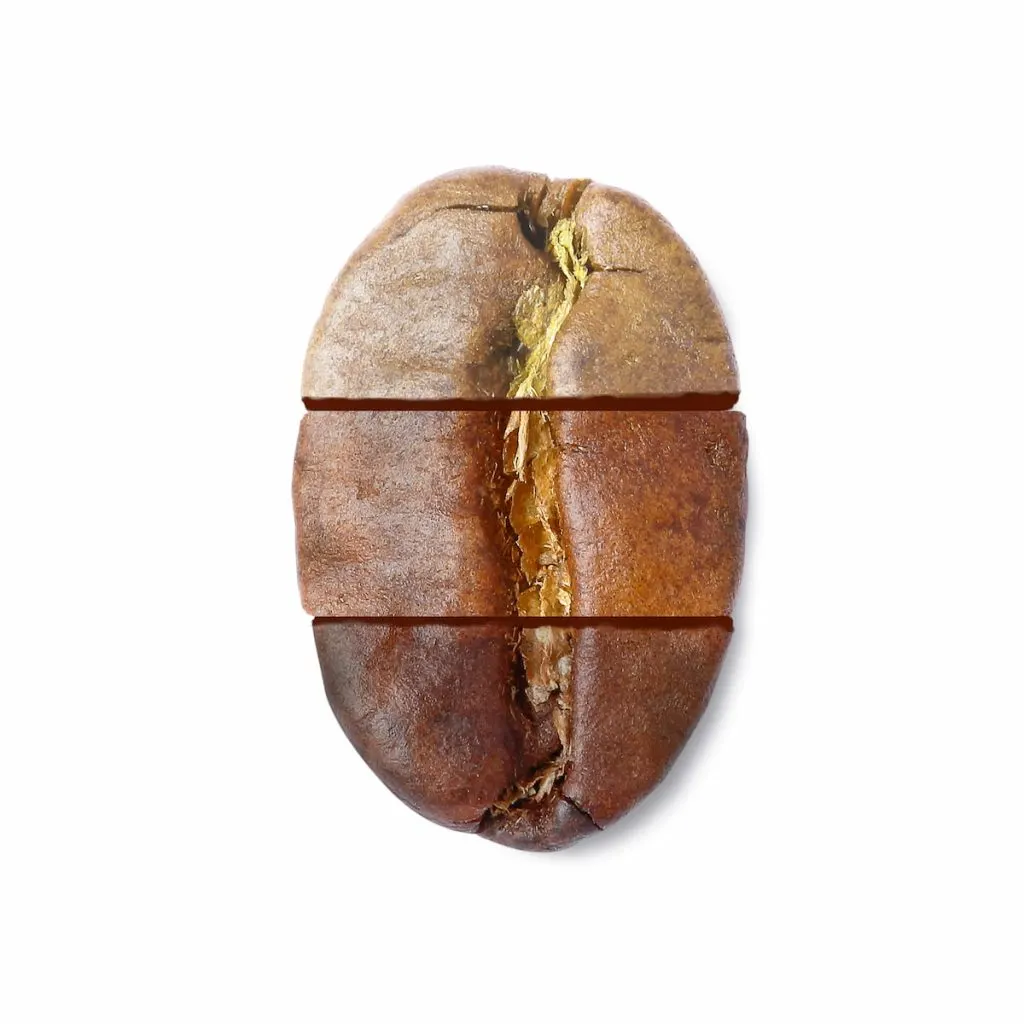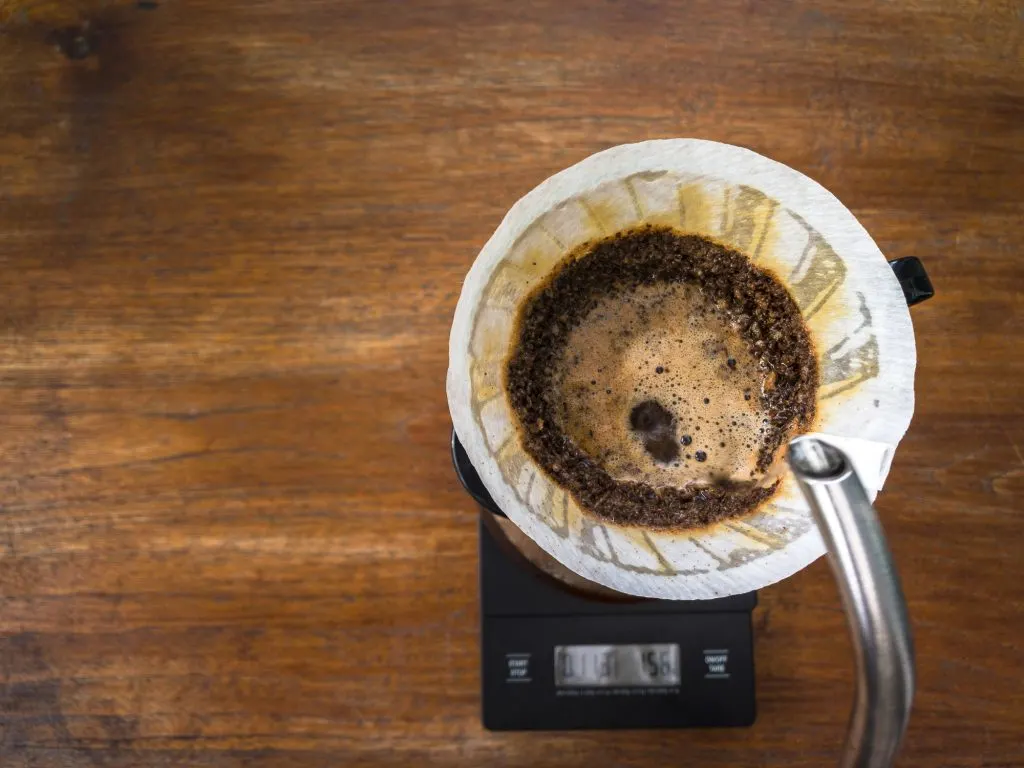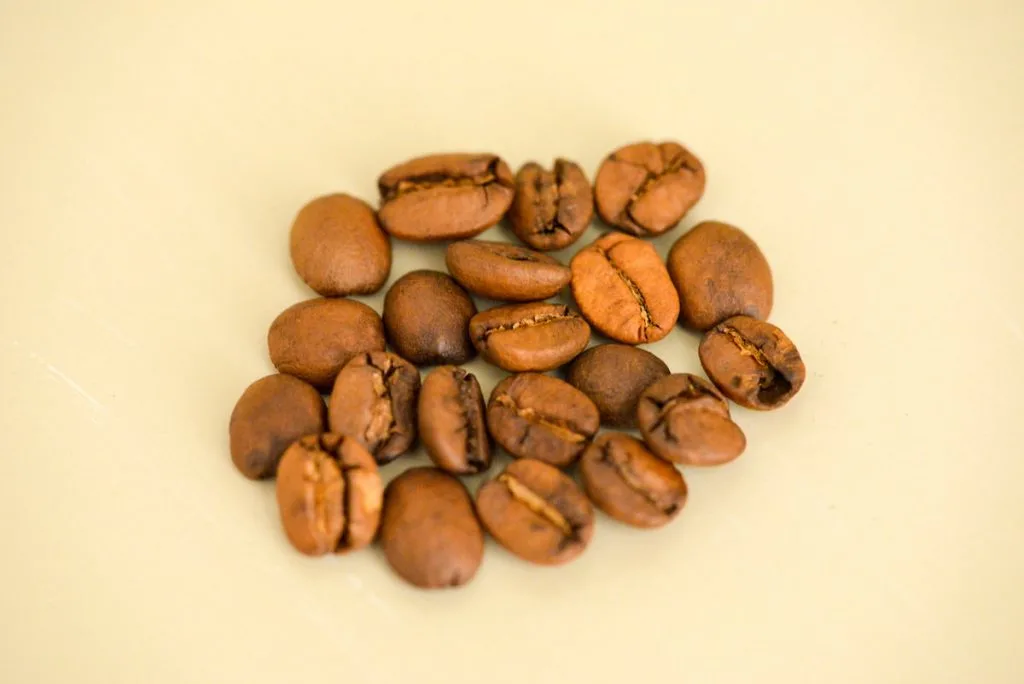Light roast coffee is fast becoming the coffee brew of choice for many coffee lovers throughout the world. Light roast coffee has a deliciously delicate flavor with many complex flavor profiles. The secret to creating the perfect light brew is in the quality of the roasted beans and the roasting temperature.
To brew the perfect cup of light roast coffee, you need a few supplies. Before you begin, make sure that you buy fresh coffee grounds from your local coffee shop.
- Lightly Roasted Coffee of your choosing, ground to the brew method
- Boiling water
- Paper coffee filters
- A pour-over container
- A coffee cup or mug
What Is The Difference Between The Coffee Roasts?
Disclaimer: Hi! this post may contain affiliate links which will take you to online retailers that sell products and services. If you click on one and buy something, I may earn a commission, see my Affiliate Disclosure for more details.

While most coffee lovers enjoy the different coffee roasts and will drink a different brew on different occasions, not many of them know what makes the roasts taste so different.
Coffee roasts come in four different roast profiles.
- Light roast. Light brown color, mild and fruity taste.
- Medium roast. A medium brown dry roast with a strong aftertaste.
- Medium-dark roast. A darker roast with a spicy, full-bodied flavor.
- Dark roast. Dark brown with a burnt, ashy taste.
A “roast profile” describes how long the coffee bean was roasted and the method used to roast it. Raw, green coffee beans are roasted for different lengths of time to create the perfect coffee profiles. The best way to identify the different roasts is by their color.
Roast profiles can be confusing. Follow these tips to choose the roast level which is right for you:
- A light roast provides a natural flavor with medium-high acidity and low bitterness.
- A medium roast has medium-low acidity, medium bitterness and provides full-bodied flavor.
- A darker roast has a heavier, smoky flavor, is very low in acidity but is very bitter.
How To Brew Light Roast Coffee

Raw coffee beans are small, green, and tasteless before the roasting process. After roasting, they are full of aroma and taste. The best flavors come from using freshly ground beans when brewing coffee, but the roast level is ultimately the determining factor in the flavor of the brew.
To brew a light roast coffee, you need freshly ground coffee beans, hot water, paper filters, and a pour-over container. A filter is placed into the container, coffee grounds are poured in, and hot water is swirled over the top. Leave the coffee to brew for three to five minutes and pour into a cup.
Brewing a light roast coffee is considered an art form by coffee connoisseurs. Many coffee connoisseurs and baristas take years to perfect their light roast coffee brews, developing their own personal signature brews.
These are some of the basic factors which determine how the coffee is going to taste:
1. The Coffee Filter
A coffee filter can affect the taste of the brew. Always place the filter in the funnel and rinse with hot water before brewing to wash off any residue that could affect the brew.
2. The Grind Size
A lighter roast means that the beans are less porous, making it difficult for compounds to be extracted during the brewing process. The smaller the grind, the quicker the flavor is released into the brew.
3. Water Temperature
A suitable temperature to use for a light roast is 203 degrees Fahrenheit (95 degrees Celsius). However, because a light roast has such a vibrant flavor, it can be brewed at different temperatures to obtain different results. Only use clean, filtered water in the brewing process.
4. The Coffee-To-Water Ratio
You can adjust the ratio of coffee-to-water to your taste, but generally, for one cup of coffee, use 21 grams (.74 ounces) of grinds to 320 grams (11 ounces) of water for a perfect brew.
5. Brewing Time
The flavor and coffee extraction are determined by the length of time that the grinds brew. An expresso can take about 25 seconds, while a pot of coffee can brew for about six minutes.
6. The Freshness Of The Coffee Beans
Always use freshly ground beans to get the tastiest coffee. Coffee oxidizes as it ages, which alters the flavor. If you don’t have a coffee grinder, your local coffee shop should grind it for you.
This Is How To Brew The Best Cup Of Coffee
Light roasts produce the best coffee using the hand-drip or the pour-over method. This method is the best, most cost-effective way to produce a perfect cup of coffee. The pour-over process simply uses a standard container to pour water over ground coffee. This is a more traditional coffee method than using a coffee or espresso machine.
What do I need to make a perfect cup of coffee?
- Ground coffee beans of your choosing
- Boiling water
- Paper coffee filters
- A pour-over container
- A coffee cup or mug
How to brew the best cup of coffee.
- Heat the water to boiling point.
- Fold the paper coffee filter into a cone.
- Place the cone into the pour-over coffee maker and wet it with clean water.
- Place the coffee grounds into the filter.
- Pour the boiling water over the coffee grounds in a spiral motion until the water has seeped through the grounds.
- Allow the coffee to brew for 3 – 5 minutes or to taste.
- Pour into a mug and enjoy!
What Makes A Light Brew Coffee Light?

A light roast is a roasting style that gently roasts the raw, green coffee bean at lower temperatures to produce a subtle, mild-flavored bean. The green coffee bean is roasted until the first crack, which usually happens only a few minutes after the roasting process begins.
Traditionally, brewed coffee refers to dark roasted beans. Roasting beans to a lighter color is a new concept and takes careful monitoring of the beans during the roasting process to create the perfect color and flavor. A light brew is the product of lightly roasted coffee beans.
The light roasting process produces a light brown roasted bean with a dry surface and a delicious, toasted taste. Generally, a lighter roasted coffee bean does not have the traditional dark color or burnt taste. The lighter the roast of the coffee bean, the more complex the flavor is.
A light roast allows the coffee bean to retain more of its flavor without giving you the burnt, bitter, and often thick taste of dark roasted coffee beans. This roast style retains the unique characteristics of the coffee bean and allows the subtle coffee flavors to shine!
A perfectly brewed light roast coffee could surprise you with its milder taste, especially if you are used to drinking dark roast coffee. A light roast is not a dark, oily drink. It is more of a silky, light drink which might make you think you are drinking tea instead of coffee!
A light roast coffee is a coffee bean roasted gently enough to produce an exciting, bold, fruity flavored, delicious drink! When ordering a light brew coffee from your local coffee shop, ask for one of these delightful drinks:
- A cinnamon roast
- A half city roast
- A light city roast
- A New England roast
Is A Light Roast Coffee the Strongest Coffee?
We would all assume that a dark roast coffee is stronger than a light roast coffee because of the color of the coffee bean. This is because darker roasted coffee beans produce flavors that overwhelm the palette with a burnt taste. The darker the bean, the more flavor is removed.
Lighter roasted coffee beans do have a stronger flavor than dark roasted coffee beans. A lighter roasted bean is not roasted for as long as a darker bean, so it retains more original flavor, minerals, and nutrients. Strong coffee is determined by the brewing ratio, and the amount of water added.
Light roasts are denser than dark roasts because of the roasting time. Darker roasted beans lose flavor and caffeine content, giving the darker roast a more bitter taste than the lighter roast, causing coffee drinkers to assume that a darker roast is stronger simply as it has a more intense taste.
Is The Caffeine Content Less In A Light Roast Coffee?
Living in our modern, health-conscious age where anything labeled “light” contains less fat, less sugar, less taste, we would assume that, because this is a lightly roasted coffee, it should contain less caffeine than dark roasted coffee and therefore be a healthier coffee to drink. This perception is simply not true.
A light roast coffee does not contain less caffeine than a dark roast coffee. The truth is the difference in caffeine levels between dark and light roasts is barely noticeable. The caffeine level in a mug of coffee is determined by the brewing method and not the roast of the coffee bean.
The brew is determined by the amount and type of coffee beans you use, the grinding method used, and the amount of time to brew the coffee drink. We like to think that a brew like espresso is a thicker, stronger, darker cup of coffee, so therefore it should contain more caffeine, right?
Wrong! The caffeine content is determined by volume rather than weight. Therefore the caffeine content is the same no matter which roast you use in your brew.
If you had to measure one tablespoon of light roast coffee beans, you would have more beans in the scoop as they are smaller and lighter than dark roasted beans. If you measured 25 grams (.88 ounces) of dark coffee beans, it would look like you had more than the light roast beans as dark roast beans look bigger, but in fact, they are the same by weight.
Does Light Roast Coffee Contain Acid?
When you think of acid, you think of something sour like lemon juice, a sour, tangy, bitter taste in your mouth, not coffee. All coffee contains acid, which is produced by a chemical reaction during the coffee process.
Light roast coffee has a sour taste, but it does not mean that it is more acidic. All coffee beans contain the same level of acidity. The roasting process determines how much acidity is retained. A light roast retains the most natural acidity, while a darker roast has less.
The acidity in a cup of coffee is what gives it the taste. It can be the best cup that you have ever had, or it could be the worst. If it is too acidic, it could give you a sour taste in your mouth. Not enough acidity, and the coffee will taste flat.
Coffee is acidic but is only a five on the PH scale out of 14, which means that it contains less acid than a can of beer or soda or a glass of orange juice. You can scale down the acidic PH in your coffee by adding sodium bicarbonate to the brew or using an alkaline dairy creamer like almond milk.
Some raw green beans are more acidic than others. The amount of acid is determined by:
- The origin of the coffee beans. Different soil compositions create differing amounts of acidity in the bean.
- The climate where the coffee is grown. Cooler temperatures allow the bean to ripen slower and produce more complex flavors than those grown in warmer climates.
- The variety of the coffee bean. Some coffees prefer warmer growing conditions, while others prefer cooler climates.
- The processing method used. A wet method allows prominent acidity, while a natural drying method allows the sweetness to overpower the acidity.
What Are The Light Roast Coffee Flavors?
Strong coffee can add punch to your day, but if you feel like changing your favorite brew and switching up the flavor, you can amp up your coffee by adding flavorings to the brew.
A variety of flavors can be added to coffee grounds during the roasting process. Fruity, floral, or sweet flavorings change the taste of the brew. Place the still-warm roasted beans into a mixer, add the flavor of your choice, and spin for 15 minutes until the beans absorb the aroma.
A light roast can have a combination of these exciting flavors added to the beans:
Fruity flavors
- Strawberry, raspberry, blueberry – berry
- Grapefruit, lemon, lime, orange – citrus
- Nectarine, Plum, peach – stone fruit
- Papaya or savory tomato
Floral flavors
- Rose
- Jasmine
- Camomile
Sugary-sweet flavors
- Sugarcane
- Honey
- Vanilla
Which Coffee Bean Makes The Best Light Roast Coffee?
Light roast coffee beans are growing in popularity due to their mild body and bright acidity. When buying a light roast for the first time, choose a few small samples of roasted beans to brew before deciding on the ideal brand for you.
Here are our top choices of the best light roast coffee brands.
- Best overall – Lifeboost Coffee
- Best on Amazon – Coffee Bros
- Best budget – Fresh roasted coffee LLC, Ethiopian Sidamo Guji Light
- Peets coffee Colombia Luminosa Breakfast Blend
These regions are well known for producing beans that work well for light roasts:
- Africa – Rwanda, Tanzania, Kenya, and Ethiopia
- Hawaii – the Kona region
- South America – Costa Rica, Nicaragua, and Columbia
Hot Or Cold Light Roast Coffee – Which Is Better?
Studies show that light roasts offer more antioxidants than dark roasts, which could assist with some long-term health issues. A light roast also has decreased chlorogenic acid levels, which contains anti-inflammatory properties.
Whichever way you drink a light roast, whether hot or cold, it is extremely enjoyable and healthy for you! As a cold coffee served over ice, it is big on flavor and retains its bright acidity. As a hot brew, it is simply delicious and packed with smooth flavor!
While a hot brew is rich and satisfying with a beautiful aroma, there is nothing more refreshing and satisfying than a cold brew on a hot day.
Cold coffee is so versatile. Cold coffee can be poured over ice as an iced coffee or brewed over ice using hot water! Brewing the coffee this way forces the brewed coffee to chill instantly, preserving all the flavors in the glass.
Choosing your roast profile will determine the strength of your brew, whether your drink is hot or cold.
Conclusion
If you are a lover of coffee, you will most likely have your favorite brew, whether it is a light roast, a medium roast, or a dark roast.
Light roast coffee is an enjoyable brew full of flavor. Light roast coffees retain more of their original flavor as they are not roasted for as long as the darker roasts. Cup for cup, they do not contain any more caffeine than the darker roasts, but they do offer that sour taste that you crave for your morning brew.
A light roast is an excellent option for you if you enjoy the aroma of coffee but don’t enjoy the bitterness. A light roast offers a milder, more delicate drink with a coffee flavor.
